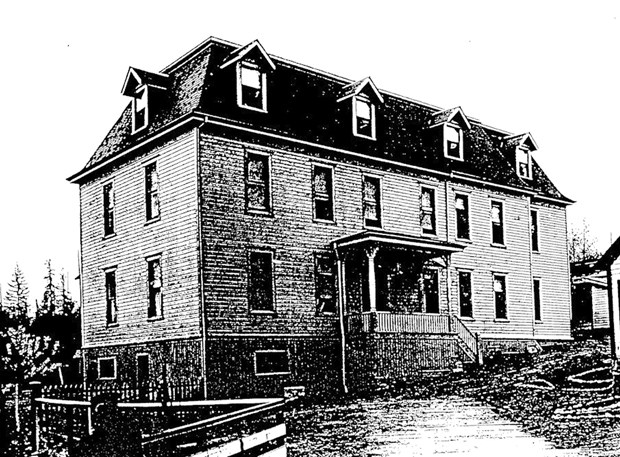The City of North Vancouver is putting up $10,000 as a gesture towards righting one of the most egregious wrongs in Canadian history.
Council voted unanimously Monday night to contribute the funds towards a monument dedicated to the more than 2,000 First Nations children who were taken from their families and sent to live at St. Paul's Indian Residential School between 1898 and 1959.
The school, which stood where St. Thomas Aquinas secondary stands today, has largely been shrouded in the mists of time. Most members of council did not know of its existence until a request for support came from the Squamish Nation-based Ustlahn Social Society.
While St. Paul's students excelled in sports and music and went on to become local business and community leaders, there have been dark and lasting consequences from the residential schooling echoing into today's generations, said Rennie Nahanee, Squamish Nation and Ustlahn Society member.
"What was not known was the effect of the boarding school on the students attending there as they later became parents themselves and were lacking in parenting skills, family social skills, cultural knowledge and their language," he said.
Students, mainly from the Squamish band but also from the Musqueam, Tsleil-Waututh and Sechelt Indian Band, were forced to attend the school from the ages of four to 16, in most cases. While in the school, they were kept from their families, forced to speak English and faced physical punishment at the hands of nuns.
The monument on the STA site will depict two children in a canoe, riding toward the crest of a wave. The first sections of the wave, which starts at a high point and then dips down into a depression, represents the pre-colonial contact with First Nations and the era of having their freedom and culture stripped from them.
"The wave going up on the other side represents our people gaining their language rights back and their culture," said Ustlahn member Barbara Wyss who attended St. Paul's in the 1950s. A plaque naming the students who attended the school will be placed underneath.
Council responded to the request with sentiment and solemnity.
"Never has a report ever made me this emotional and I cannot fathom the pain and suffering that you have suffered over the years," said a tearful Coun. Linda Buchanan. "The $10,000, to me, is a very small contribution and very important given the history that took place here in this city.. .. What we tend to do as humans is forget and repeat history. I think the art is very important as a visual reminder."
Coun. Guy Heywood supported the motion but added he was disappointed that the Archdiocese of Vancouver, which ran the school, was not paying 100 per cent of the cost, given its role in the residential school system. "It is fascinating the way in which the church has come to grips with the multi-generational damage that this experiment in social engineering has done to your peOple," he said.
After noting that he hadn't even heard of St. Paul's until it was part of council business, Coun. Rod Clark added that the Catholic church was not the only organization responsible. "There's certainly a role by the government of Canada as well, and for that I, as a proud Canadian, apologize. I think this little token that we're granting here is probably very inadequate but it's what we've been asked for and I'm pleased to support it," he said.
Earlier in the meeting, Mayor Darrell Mussatto read a proclamation naming Sept. 16 to 22 "Reconciliation Week," to acknowledge the "grave injustices" First Nations people experienced as a result of European colonialism.



